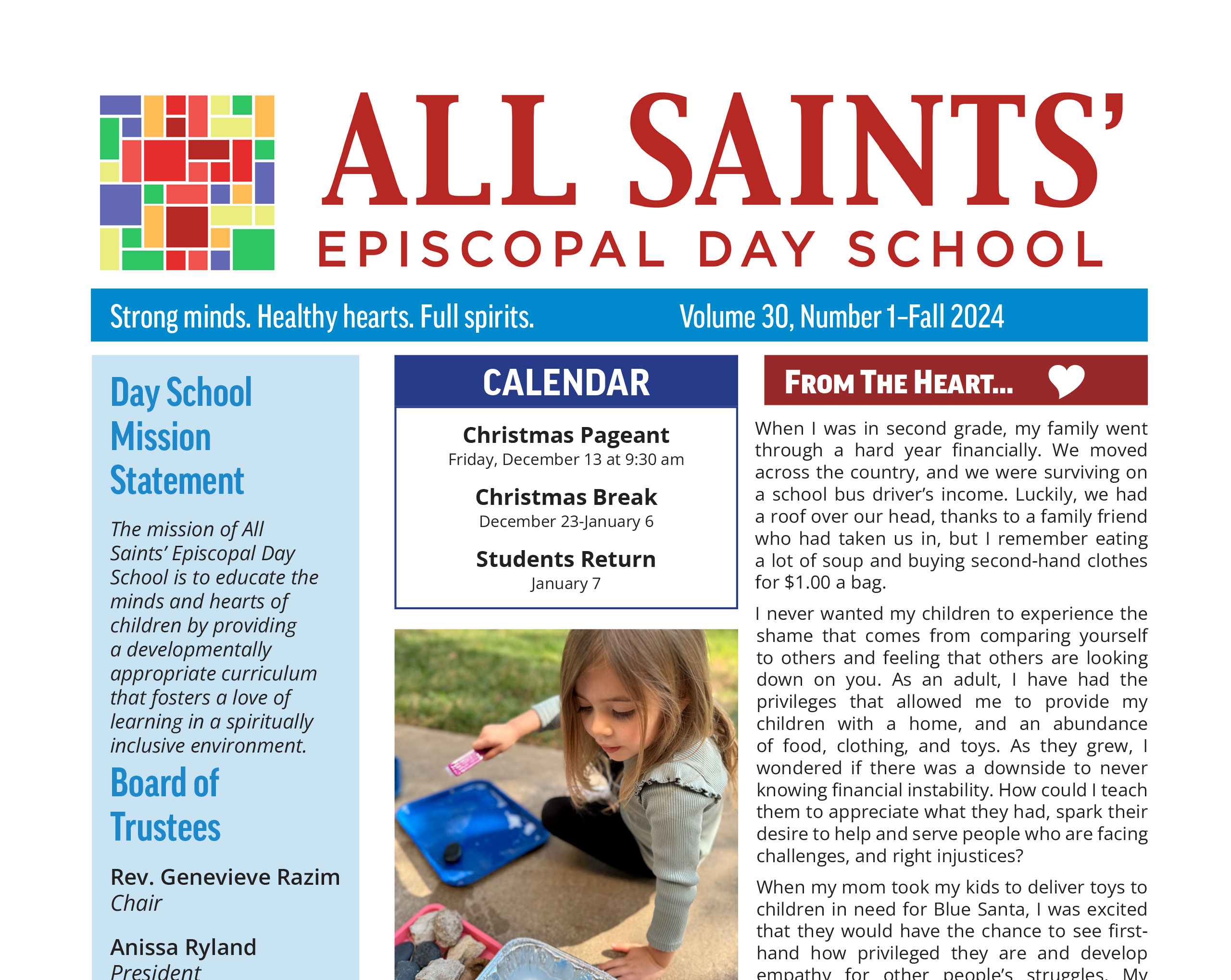When I was in second grade, my family went through a hard year financially. We moved across the country, and we were surviving on a school bus driver’s income. Luckily, we had a roof over our head, thanks to a family friend who had taken us in, but I remember eating a lot of soup and buying second-hand clothes for $1.00 a bag.
I never wanted my children to experience the shame that comes from comparing yourself to others and feeling that others are looking down on you. As an adult, I have had the privileges that allowed me to provide my children with a home, and an abundance of food, clothing, and toys. As they grew, I wondered if there was a downside to never knowing financial instability. How could I teach them to appreciate what they had, spark their desire to help and serve people who are facing challenges, and right injustices?
When my mom took my kids to deliver toys to children in need for Blue Santa, I was excited that they would have the chance to see first- hand how privileged they are and develop empathy for other people’s struggles. My daughter came back wide eyed, telling me about a large family that lived in a small trailer and how happy and appreciative they were. The experience made an impression on her, and it became a tradition that my kids eagerly awaited, but I wanted more for them than once a year service.
Young children need multiple opportunities to be of service to others, to see empathy modeled, and be encouraged to reflect on what they are grateful for. Here are some of the ways I found to develop gratitude and empathy at home:
- Practicing random acts of kindness and expressing appreciation when you see or receive acts of kindness
- Giving your child age-appropriate chores, working together as a team, and giving specific feedback, for example, “You picked up all your Legos. That was helpful!”
- Daily sharing at a meal about something each family member is grateful for
- Finding ways as a family to help others through donations or time
The Day School has worked intentionally to provide children with regular service opportunities that help them understand how their life experiences may differ from others and the joy that comes from giving. The traditional service projects at our school have been expanded and a service-learning calendar was created. Teachers decided on the caring concepts that guide student discussions. Recommended books to support service learning in the classroom and in our homes are also included. My prayer for our school family is that we can be of service to others, and nurture gratitude in ourselves and in our children not only during the holiday season, but throughout the year.
Gigi Khalsa, Head of School

